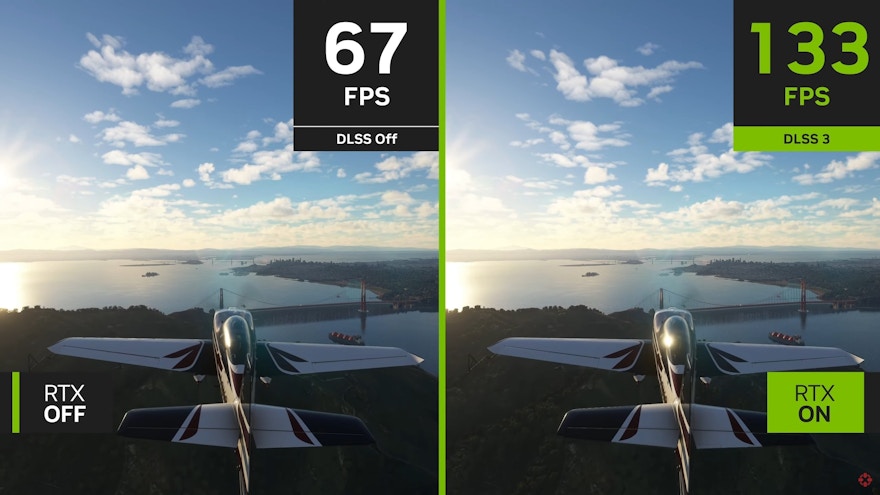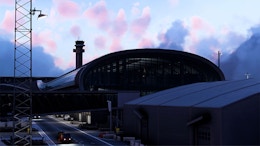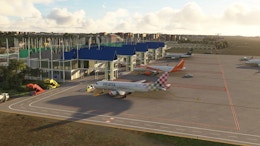Nvidia today announced their next generation of graphics cards coming next month. The new RTX 40XX series of cards promises vastly improved performance thanks to its 76 billion transistors and up to 18,000 CUDA cores. This represents a 70% improvement on the previous last generation cards.
That alone would be enough to get people talking, but Nvidia also demonstrated its new DLSS 3 technology. Nvidia’s DLSS 3 is a new technique that effectively adds additional frames to a supported title to give a huge boost in the frame-rate displayed. This is combined with Nvidia’s Reflex to reduce any latency in the title, so that you get the benefit of a smoother-looking simulator, whilst having responsive inputs from your controls. What’s more, this also benefits games that are also CPU-limited (like Microsoft Flight Simulator), which could mean that DLSS 3 is a win-win for all.
To demonstrate this new technology, Nvidia used Microsoft Flight Simulator in their keynote conference earlier today. The video (courtesy of IGN) shows over 100% performance improvements in various environments. This includes dense cities and more sparse landscapes.
The new DLSS 3 technology is limited to the 40XX series of cards, but the differences shown so far are almost night and day. Of course, this is just a small sampling of the simulator and not running in scenarios where frames-rates are most impacted (think third-party addons in a packed international airport).
The new Nvidia 40XX series of cards will come in a number of variations: the RTX 4080 (12GB / 16GB) and the RTX 4090. The RTX 4090 comes with 24GB VRAM and is launching on October 12th for $1599/£1679. The RTX 4080 16GB edition arrives in November and costs $1199/£1269, whereas the 12GB edition will cost $899/£949.











